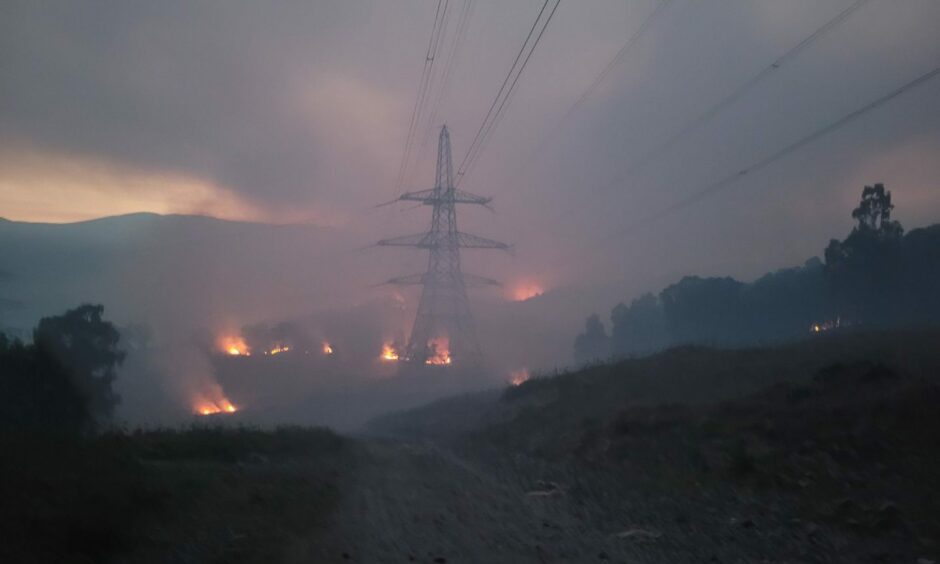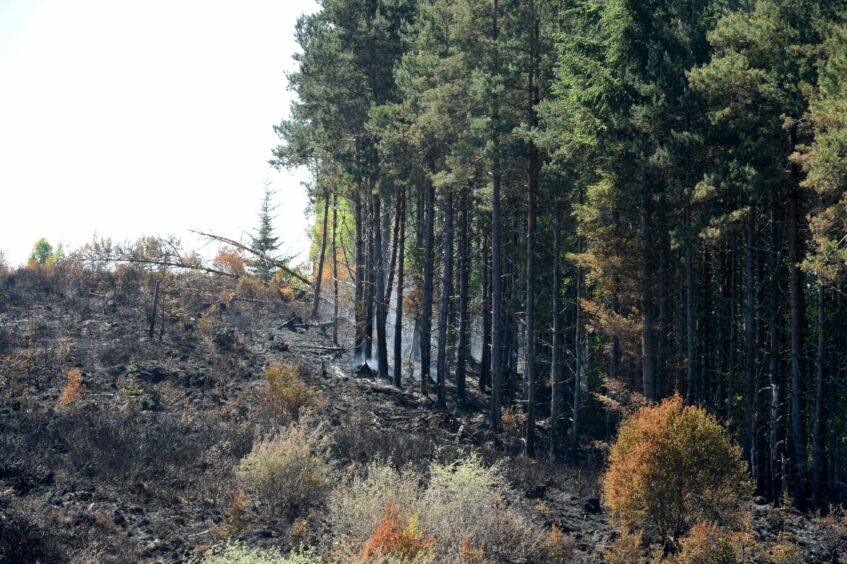A new short film has shown the benefits of controlled burning in tackling future wildfires in the Highlands.
The project, led by Loch Ness Rural Communities, features land owners, gamekeepers, conservationists and rural workers in and around Loch Ness.
Most of them faced their toughest challenge in years following the break-out of a raging wildfire at Cannich in late May.
The fire blazed for more than two weeks and took many workers from all agencies to help combat the fierce flames, which laid waste to almost 30 square miles of land.
Wildfires this year have been devastating, with large fires at Daviot and Fort William prompting a brave and tireless response from local services.
The video was shown at a recent summit hosted by Highland MSP Kate Forbes with relevant groups in attendance.
There they discussed the “lessons to be learned” from the Cannich wildfire response and how the future-proof the local response to wildfires.
Concerns were raised about the Scottish Government’s Wildlife Management and Muirburn (Scotland) Bill, which would limit controlled burning/muirburning by land managers.
Without controlled burning, vegetation would be allowed to grow unchecked, providing more fuel for the fire and potentially leading to much more destructive fires.
‘Take a step back from measures to penalise estates and grouse moors’
The video, produced in partnership with Scotland’s Regional Moorland Groups, praised the rural workers as the “last line of defence” when a fire breaks out.
Lianne MacLennan, national campaigns manager at the Regional Moorland Groups, said: “When a wildfire occurs, it is firefighters and rural workers who are on the frontline to protect our communities.
“We would appeal to the Scottish Government to value this expertise and take a step back from measures to penalise estates and grouse moors.”
Ross Ewing, director of Moorland at Scottish Land & Estates, added: “One of the key tools we have in preventing the spread of massive wildfires is controlled burning under the right conditions – muirburn. By doing this, we can create firebreaks to help prevent wildfires taking hold.
“A controlled, cool burn will not damage the soils underneath but sadly, as we have seen at Cannich, the ferocious nature of unchecked wildfires will leave lasting damage on the environment for decades to come.
“At a time when countries across the continent are using controlled burning to lessen their own wildfire risk – and the Scottish Fire and Rescue Service is on record as supporting muirburn – the Scottish Government is seeking punitive new controls on the practice.”
A Scottish Government spokesman said: “Muirburn can help to reduce fuel loads and lower the risk of wildfires. Our Wildlife Management and Muirburn Bill contains provisions to enable NatureScot to issue muirburn licences for this purpose.
“But if undertaken without due consideration of all the possible consequences, and in the wrong place, muirburn can have a serious negative impact on wildlife and the wider environment.
“Our bill places strict regulations on the use of muirburn, which will ensure that we are enabling protection against the risk of wildfires, while still protecting our natural environment and wildlife.”


